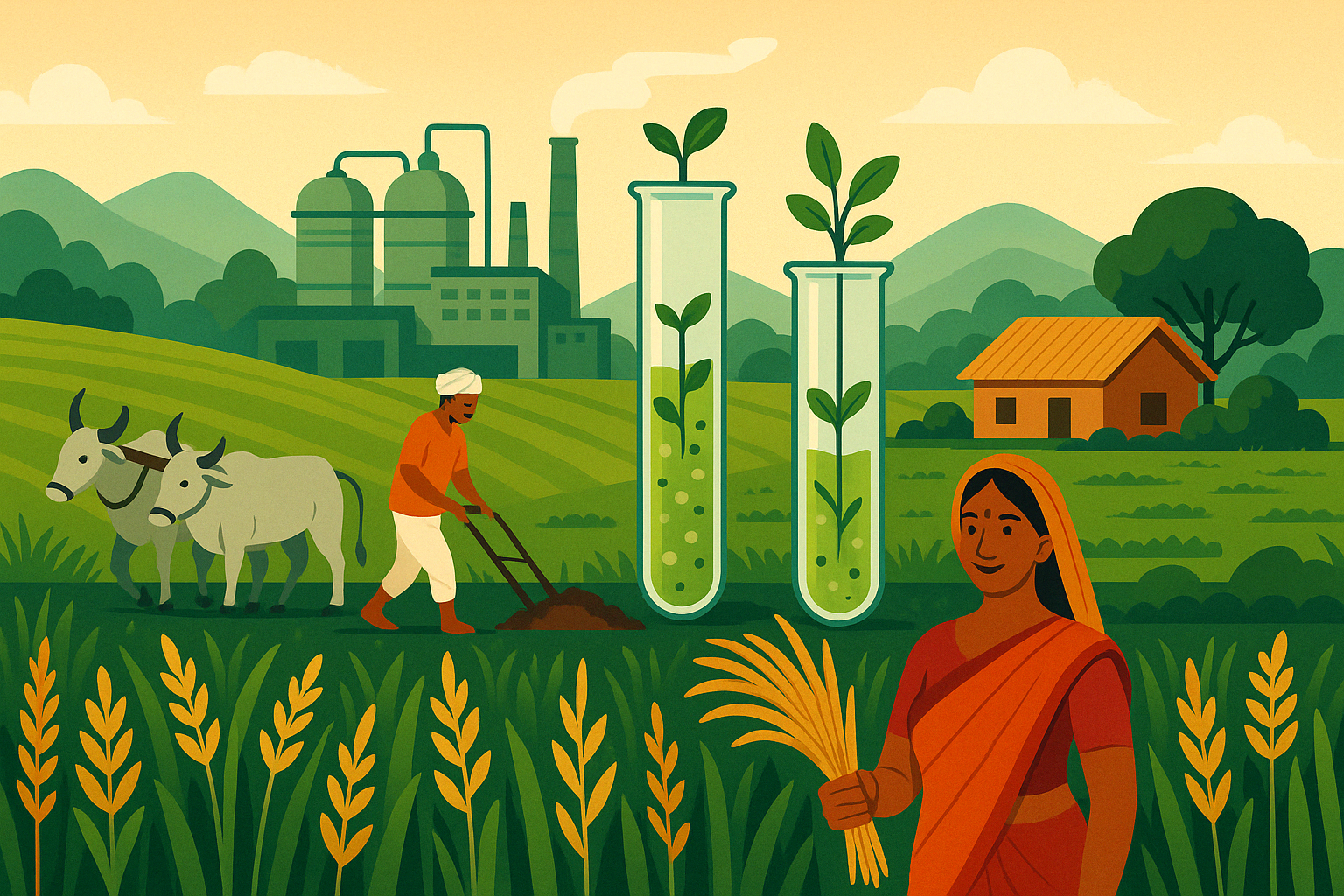The most efficient way to produce cleaner energy
Hydrogen and its advantages for power generation
What is Hydrogen?
Hydrogen is the most abundant and significant element on Earth. It is one of the leading options for storing renewable energy. It combines with other elements to form compounds like water (H2O) and Methane (CH4). Also, a large amount of hydrogen is combined with nitrogen in the air to form ammonia (NH3). Liquid hydrogen is used to study superconductors and make rocket fuel. Hydrogen is also an energy carrier because it allows one form of energy to form into another.
Advantages of Hydrogen for Power Generation:
Given that renewable power generation from wind and solar sources is irregular and variable, rapid power generation is typically driven by natural gas. Natural gas is a fossil fuel that produces different air pollutants, including carbon dioxide, when burned to generate electric power and is expected to deplete by the 2050s. Though there are lower per-unit emissions, the growth in using natural gas for power generation has made it the top producer of CO2 emissions.
- Hydrogen is being projected as the ideal eco-friendly fuel of the future. It has various advantages over fossil fuels, and they are as follows:
- It is the tenth most abundant element on the planet and the universe’s most productive.
- It is formed from water, returns to water when burnt, and produces no pollutants.
- It contains more than three times the energy of most hydrocarbon fuels or gasoline.
- It is invisible, non-toxic, and odourless.
- As hydrogen combustion does not emit CO2, it lowers GHG emissions.
- It is easy to sustain a flame when ignited because of its significant flammability limits.
- It has a high spontaneous ignition temperature of 650oC, i.e., it requires a spark to ignite below this temperature and thus increases safety.
The Indian Green Hydrogen market is in a very nascent stage, with a market size of around $1 billion in 2022. The market is expected to grow at a CAGR of more than 35% by 2030 and reach $12 billion
Market Dynamics
Driver: Desulfurisation and greenhouse gas emissions
Globally, greenhouse gas emissions are growing, primarily due to fossil fuel use and industrialisation. Greenhouse gas emissions are responsible for increasing global temperatures, which have risen by about one °C in the last century.
According to the Research Institute for Humanity and Nature study, India is the third-largest emitter of greenhouse gases, world sting for 2.46 Billion metric tons of carbon, or 6.8% of the world’s total emissions. Food and energy are the two areas of investment that account for the majority of pollution in the country across socioeconomic classes; according to National Sample Survey Organisation (NSSOIndia’sn India’s reliance on coal-based power plants, electricity consumption was the most significant contributor to household carbon footprints, ranging from 26% in low-expenditure households to 36% among the rich. India has to phase out coal, invest in renewables, and encourage energy-efficient electricity production and other consumables to minimise carbon emissions.
Restraint: The high cost of hydrogen energy storage
Hydrogen can be stored in three ways: as compressed gas in high-pressure containers, liquid at -253°C, or as a chemical by reacting or absorbing chemicals or metal compounds. Through using the electrolysis process, electricity can be stored in the form of hydrogen. The cost of storing hydrogen energy is higher than that of fossil fuels. Liquid hydrogen has a higher density than gaseous hydrogen and requires liquefaction, necessitating a complex mechanical plant and adding to the total expense.
Opportunity: Development of technologies for green hydrogen production
Hydrogen is developed using various technologies, including steam methane reforming, partial oil oxidation, coal gasification, and water electrolysis. Most of the hydrogen produced today comes from reforming fossil fuels, which is the most economical method. However, as CO2 is released in the process, this does not have any real climate benefits.
The idea of green hydrogen is still in its development. Green hydrogen is generated by water electrolysis using renewable energy sources such as onshore, offshore wind, and solar power. Green hydrogen has many uses, from industrial feedstock to energy storage and fuel cell vehicles. Still, several organisations are investing in developing new green hydrogen production plants to support the reduction of GHG emissions.
Hydrogen Power Generation in India
National Green Hydrogen Mission
Finance Minister Nirmala Sitharaman declared in her Union Budget address that India would launch its National Hydrogen Energy Mission (NHEM) in 2021-22, while Prime Minister Narendra Modi launched the “National Hydrogen Mission” from the Red Fort on Independence Day in 2021.
Finally, on 4th January 2023, Union Cabinet approved the National Green Hydrogen Mission with a total initial budget of Rs. 19,744 Crores, including an outlay of Rs. 17,490 Crores for the SIGHT (Strategic Interventions for Green Hydrogen Transition) programme, Rs. 1,466 Crores for pilot projects, Rs. 400 Crores for R&D, and Rs. 388 Crores towards other Mission components.
The key objectives of this mission are:
- To produce green hydrogen with a capacity of a minimum of 5 million metric tonnes annually
- To add renewable energy capacity of more than 125 gigawatts by 2030
- To generate more than six lakh jobs
- To attract more than Rs. 8 lakh crores of investments
- To reduce fossil fuel imports by more than Rs. 1 lakh crore
- To avert more than 50 million metric tonnes of greenhouse gas emissions annually by 2030
India’s favourable geographic conditions and abundance of natural elements it has a considerable advantage in green hydrogen production. The government is taking several steps to incorporate renewable energy into the current energy mix successfully. The government has provided an impetus to scaling up the infrastructure for gas pipelines in the country’s length and width and has initiated power grid reforms, including smart grids. The development of green hydrogen in India will become cost-effective with sufficient capacity and renewable power generation, storage, and transmission, guaranteeing energy protection and eventually ensuring self-sufficiency.
Challenges in Policy
The economic viability of extracting green or blue hydrogen is one of the most significant obstacles that the industry faces in commercialising hydrogen. The technology used in developing hydrogens, such as carbon capture and storage (CCS) and technology for hydrogen fuel cells, is at a developing stage and is costly, raising the cost of hydrogen production. Besides, maintenance costs for fuel cells after the completion of a plant can be expensive.
Commercial use of hydrogen as a fuel and in industries necessitates a significant investment in R&D and infrastructure for hydrogen processing, storage, transportation, and demand development. However, the government may include information regarding hydrogen technology, such as storage, research and development, pilot projects, and other requirements and safety, in NHM’s draft regulations.
Recent Developments in India
A recent report from The Energy and Resources Institute highlighted the potential of green hydrogen in India. According to the report “The Potential Role of Hydrogen” in India”, by 2050, nearly all of India’s hydrogen will be green–produced by renewable electricity and electrolysis.
Some of the leading organisations in India have already entered this space, for example:
- TotalEnergies agreed with Adani Enterprises Limited (AEL) to acquire a 25% interest in Adani New Industries Limited (ANIL). ANIL will be the exclusive platform of AEL and TotalEnergies for the production and commercialisation of green hydrogen in India. ANIL will target the production of one million metric tons of green hydrogen per year by 2030, underpinned by around 30 gigawatts of new renewable power generation capacity
- Reliance (RIL) partnered with Danish company Stiesdal A/S through its subsidiary Reliance New Energy Solar (RNESL) to develop and manufacture hydrogen electrolysers. It is estimated that RIL will build a 2.5 gigawatts electrolyser manufacturing unit.
- State-owned GAIL plansIndia’sld India’s largest green hydrogen plant to supplement its natural gas business with carbon-free fuel. The company has finalised 2-3 sites for the unit, including one at Vijaipur in Madhya Pradesh. The plant planned will have a capacity of 10 megawatts, the largest announced so far in the country.
- NTPC plans to produce green hydrogen from its upcoming 4,750 megawatts renewable energy park at the Rann of Kutch. The capacity of the plant will be 5 megawatts. Currently, NTPC is running a pilot project in its Vindhyanchal unit, where the cost of hydrogen is estimated to be around US$ 2.8-3/kg, which is expected to fall going forward through economies of scale.
- Indian Oil Corp. (IOCL) plans to build a green hydrogen plant at its Mathura refinery in Uttar Pradesh. The unit will likely have a capacity of around 160,000 barrels per day. It has set a target of converting at least 10% of its hydrogen consumption at refineries to green hydrogen soon. As a first step towards this, 10% of the usage in the Mathura refinery will be converted to green sources by 2024.
- Larsen and Toubro (L&T) aim to be net-zero emissions by 2040. It plans to spend between ₹10-50 billion on its green initiatives, spread over many years. 90% of this would come from switching to renewable energy, green hydrogen, and biodiesel initiatives, while the other 10% would be offset by creating carbon sinks.
Comparison Of Renewal Energy Sources
| Resource Potential | Technical Potential | Economic Potential | Market Potential | |
| Hydrogen Energy | It is the tenth most abundant element on the planet and the universe’s most abundant. | End-use applications for hydrogen energy are not yet mature, but they are in the development stage. There are only 500 plants in the world. | Hydrogen is a far more cost-effective energy carrier if production and transportation costs are subsidised than coal and synthetic fossil fuels. | By 2050, green hydrogen could meet the world’s energy needs. (Forbes) |
| Solar Energy | The enormous amount of solar energy available makes it a very appealing source of electricity. | Depends on the climate. It has a technical potential of 1,500–50,000 EJ per year, greater than the expected global primary energy demand of 1,000 EJ annually in 2050. | Solar energy not only generates power at a comparable cost to fossil fuels, but it also creates a significant number of jobs. | Solar energy is expected to be the woworld’sargest source of electricity by 2050. |
| Wind Energy | Wind energy resource depends from region to region | Depends on the climate. A wind turbine with a capacity of 2.5–3 M.W. in a year can generate more than 6 million kWh. | The land-based utility-scale wind is one of the most cost-effective energy sources available today, at 1–2 cents per kilowatt-hour. | In 2050, the wind will provide 20% of global electricity demand. (GWEC) |
| Biomass Energy | It can be a source of renewable energy both locally and globally. | A range of 130-260 EJ per year of transport fuels or 100-200 EJ per year of electricity | When compared to oil, biomass is cost-effective in terms of fuel as per British Thermal Unit (BTU) | In 2050, a bioenergy supply which reaches 1,000 EJ should be able to meet global energy demand. (World Bioenergy) |
Hydrogen Power and Way Ahead
While the global debate continues to rage around hydrogen and optimal business cases that can be implemented in a 5–10-year time frame, the same is not so high in India due to its enormous renewable energy potential. It is essential to tackle the over-reliance on imports of India’s oil & India’sds, and green hydrogen is the solution. At this juncture, India can utilise increased investment in R&D, capacity building, compatible legislation, and the potential to establish demand among its vast population with a calibrated approach. By exporting hydrogen to its neighbours and beyond, such initiatives will propel India to become the most favoured country.
India’s emergenceIndia’sreen hydrogen hub will soon be assured by dropping electrolyser costs worldwide and a significant decrease in the per-unit cost of renewable power domestically. The variety of green hydrogen end-user segments indicates a massive opportunity for India to tap into carbon reduction of hard-to-abate industries, such as steel, cement, aviation, etc.
Using green hydrogen to manufacture green ammonia is another untapped opportunity for the fertiliser industry to reduce its import dependency. Green hydrogen combined with CGD networks would also help India reduce its import bill. And establishing NHM is a positive move in the right direction at an appropriate time. It must be followed by a mandate-based strategy to support the green hydrogen economy.
According to Goldman Sachs, green hydrogen could meet up to 25% of the world’s energy neworld’s2050 and become a $10 trillion addressable market. It will take approximately US$110 billion in investment and creating over 120,000 jobs to meet the target, so it will play an essential role in assisting economies in recovering from the effects of COVID-19. According to IHS Markit, investment in green hydrogen production is projected to reach $1 billion annually by 2023 as renewable energy and electrolyser technology costs are falling and governments are adopting supporting policies. Green hydrogen production costs have decreased by 40% since 2015 and are projected to decrease by another 40% by 2025.
Conclusion and Recommendation
Hydrogen is marginal in the power industry, accounting for less than 0.2 per cent of electricity generation. But a transition soon is within the realm of possibility.
Countries worldwide are working to speed up the production and use of hydrogen technology to resolve environmental issues and increase the security of electricity. Hydrogen technology can serve as a medium for long-term, large-scale clean energy storage supporting renewable power production. This could be a near-perfect energy source since it has no harmful by-products and is just as fuel-efficient as the average internal combustion engine.
Nevertheless, devising a cost-effective and well-regulated transition is challenging, and generating hydrogen from renewable energy sources is costly.
India should think about and research hydrogen power generation. The fossil fuel will be extinguished by 2100 A.D., as predicted by the Ministry of Petroleum and Natural Gas. The Persian Gulf country has turned down India’s offer to India’sotal rupee payments for oil imports at present, in a setback for the government, which isn’t account deficit (CAD) by containing the outflow of dollars and saving about $8.47 billion on crude oil imports from Iran.






